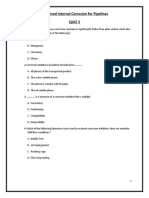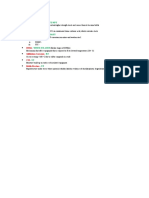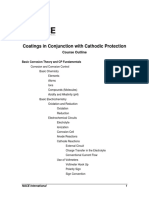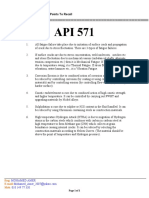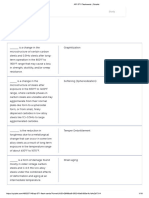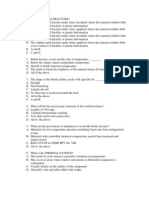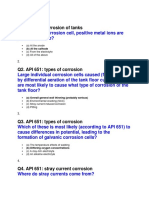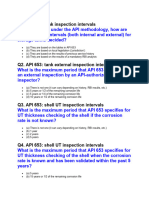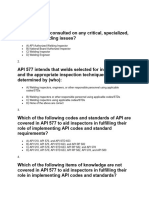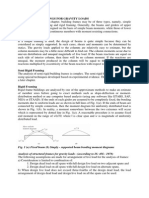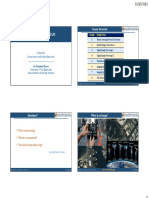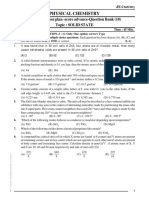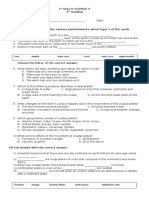0% found this document useful (0 votes)
168 views4 pagesAPI 651 Questions
This document contains 10 multiple choice questions about corrosion and cathodic protection of storage tanks according to API 651 standards. It addresses where positive metal ions are produced in a galvanic corrosion cell (anode), the type of corrosion large individual corrosion cells are most likely to cause (pitting), the condition most likely to cause differences in potential leading to galvanic cells (differing oxygen concentrations), where stray currents come from (generators, overhead power lines, electric railways, all of the above), and the criteria least likely to influence internal corrosion severity (foundation material). The correct answers are identified.
Uploaded by
Mohammed YoussefCopyright
© © All Rights Reserved
We take content rights seriously. If you suspect this is your content, claim it here.
Available Formats
Download as DOCX, PDF, TXT or read online on Scribd
0% found this document useful (0 votes)
168 views4 pagesAPI 651 Questions
This document contains 10 multiple choice questions about corrosion and cathodic protection of storage tanks according to API 651 standards. It addresses where positive metal ions are produced in a galvanic corrosion cell (anode), the type of corrosion large individual corrosion cells are most likely to cause (pitting), the condition most likely to cause differences in potential leading to galvanic cells (differing oxygen concentrations), where stray currents come from (generators, overhead power lines, electric railways, all of the above), and the criteria least likely to influence internal corrosion severity (foundation material). The correct answers are identified.
Uploaded by
Mohammed YoussefCopyright
© © All Rights Reserved
We take content rights seriously. If you suspect this is your content, claim it here.
Available Formats
Download as DOCX, PDF, TXT or read online on Scribd
/ 4










